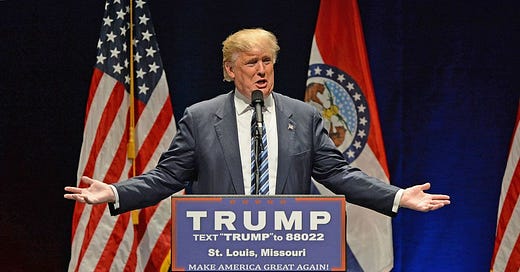Photo: Brittannica
In November, Donald Trump won the presidential election, securing both the popular vote and electoral college. This means that many Americans, or at the very least a majority of the population, resonated with at least some parts of his plan to reshape America. So what is his plan and how is he planning to enact it over the next four years?
Let’s first take a look at his plans for the economy. A key feature of his 2024 platform was tax reform. One of his main reformation plans was tariffs, especially on imports from other countries. He put a big emphasis on imports from competitor countries such as China, which he is imposing a 60% tariff on. In terms of corporate tax, meaning taxation rates on businesses, he plans to maintain the current rate of 21%. A small feature related to corporate tax was his no tax on tips plan, meaning all tips earned by workers in the US will not be taxed. Trump also plans to make the 2017 Tax Cuts and Jobs Act permanent. This act was put in place during Trump’s first term and includes a cap for state and local tax deductions ($10,000), and expansion of the child tax credit among other things. The Trump administration has also discussed making changes to provisions added to the 2022 Inflation Reduction Act.
Trump has also voiced some plans for banking, fintech, and crypto regulation. Because of Trump’s seemingly close relationship with tech giants and a desire to expand those industries, regulations in those sectors may relax and a focus will likely be placed on boosting those industries. In terms of banking, Trump will likely try to foster a competitive banking sector. This focus may encourage banks to streamline existing rules to be more efficient, which will aid in competitive banking. Experts in banking also expect that this competition will make the new administration open to merging of big banking firms.
In terms of employment and labor laws, the administration plans to reinstate prior regulations which favored employers in severance agreements. This is following a trend of the administration falling on the side of employers. Trump plans to relax rules governing independent contractors, vetoing pro-union proposals, and his controversial anti-DEI stance. Trump has already terminated DEI programs in the federal government and terminated grants for equity-related programs.
In terms of immigration, Trump has already been enacting many parts of his immigration plan, including mass deportations. He has been running into trouble with courts in terms of the legality of certain aspects of his plans, specifically his use of the Alien Enemies Act of 1798 to deport Venezuelan immigrants. He has also spoken about eliminating birthright citizenship in the US, but that will likely run into serious legal complications if he tries to pass any sort of bill in that department.
In terms of climate change, Trump has talked about increasing fossil fuel usage. He has also withdrawn from the Paris Climate Agreement, and may be be focused on undoing the SEC’s climate disclosure rules. Trump has the potential to run into disagreement within the Republican party on climate measures, seeing as many congressional Republicans have supported climate change prevention legislation in the past, specifically in terms of clean energy which boosts economic development.
Beyond his specific legislative plans, there will undoubtedly be a unique way that the administration is going to approach governing for the next four years. A contributing factor to this is the fact that Republicans have unified party control of the presidency, the house, and the senate. This also happened the first time that Trump was president in 2016, but many experts look back on that period as a time of inefficiency - despite having all three, the administration didn’t actually accomplish much. This time, it is fair to expect that the administration has a better plan for how to maximize the triple control. Trump has essentially two ways forward in handling this triple control. He can work to maximize his support with Republicans in Congress by championing popular Republican agendas. Conversely, if he decides to adopt some more fringe ideas within his party, he has the potential to lose a lot of support. One of these ideas which he has floated before is “entitlement reform” which would include cutting social welfare spending. This is unpopular with much of the population and many Republicans and adopting this would likely cause Trump to lose support.
Trump also will likely have to make some new picks for the Supreme Court. The people he chooses to staff that branch are incredibly important, as they will likely outlast him in the federal government. In the long term, having supporters on the court will assist Trump’s successors and make it harder for Democrats in general. Trump also has goals which may come in conflict with existing precedent or law, and so having supporters on the court will help him evade those conflicts and accomplish his goals.
Finally, Trump has mad many of his picks for his cabinet already, and we will dive more into those people in the following articles, but those people are crucial to helping Trump’s agenda permeate into all of the areas which the federal government touches. It is risky to predict how Trump will act the next few years, as he has proven to be somewhat erratic. However, the things he has talked about give us a good idea about his goals and the people he chooses for positions of power tell us about his plan for the next four years.




